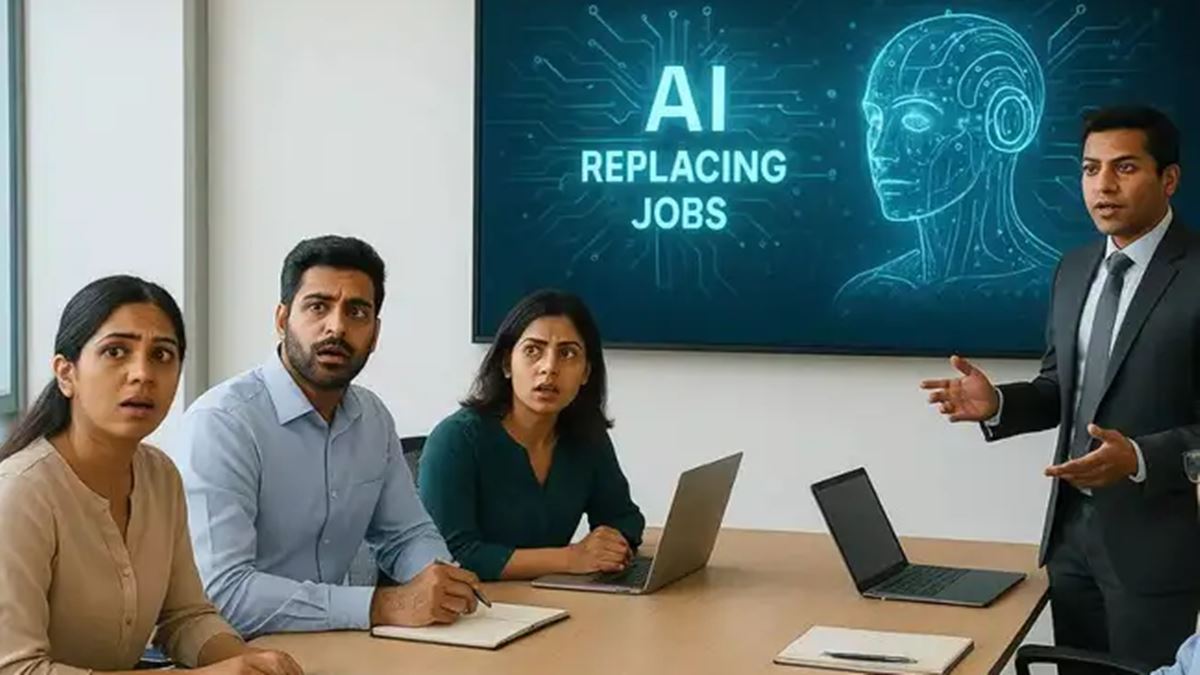The dream of studying abroad and building a high-paying tech career has never felt more uncertain for Pooja Agarwal (name changed). After a bachelors in computer applications, she went to the United Kingdom for a masters in financial technology. Her degree was completed in September last year. But she hasn’t been able to find a tech job.
For now, she works as a pizza chef, a role that supports her current needs but represents only a small part of her larger career aspirations. Agarwal has given herself a year to find a professional job. If she does not succeed within that time frame, she plans to return to India next year.
As AI (artificial intelligence) begins to handle more entry-level coding tasks, many students who moved abroad with hopes of breaking into the tech industry are now facing unexpected challenges. What once seemed like a secure path, landing a junior developer role and working their way up is no longer guaranteed. With companies increasingly relying on AI tools to automate routine programming work, the demand for fresh graduates has begun to shrink. For students like Agarwal, this shift has added a new layer of uncertainty to an already competitive job market.
According to Dario Amodei (American artificial intelligence researcher and entrepreneur), AI could eliminate up to 50% of entry-level white-collar jobs within the next five years, potentially pushing unemployment to 10–20% and tech companies are already responding by chopping roles or freezing hiring. This means that many junior and mid-level positions, once pathways to full-time careers, are being reshaped or disappearing entirely as AI becomes a cost-effective alternative.
As Aman Chadha, part of the Gen AI leadership at Amazon Web Services (AWS), puts it, “For students trying to secure internships or full-time roles in tech, traditional strategies no longer suffice. The ability to ship usable projects, showcase tangible impact or demonstrate domain expertise is gaining precedence over GPAs or class rankings.”.
A well-defined path
However, the grass may appear greener on the other side. Back in India, as more families became well-to-do, they wanted the next level of social mobility and the tech job in the US route was the easiest to pursue. American universities opened up more tech courses to cater to international students, more jobs were available in tech and visa sponsorships were easier.
And what is more, the economics of this dream was working like a smooth formula.
“Most American colleges charge anywhere between $30,000 to $60,000 per year in tuition, which translates to roughly ₹25 to 50 lakh annually,” explains career counsellor Shavi Zehra. “Add to those living expenses, which range from $15,000 to $25,000 (₹12 to 20 lakh) and you are looking at a total investment of ₹70 lakh to over ₹1 crore for a two-year degree. It is a massive financial commitment, one that is becoming harder to justify as entry-level tech jobs grow more competitive and uncertain.”
A middle-class family in India typically manages to cover around 20-30% of the total cost from personal savings while the remaining amount is usually financed through education loans. Banks and financial institutions are generally willing to offer loans for the rest, especially for students admitted to reputed universities abroad.
Over the last decade, foreign education loans have become increasingly widespread with banks and private lenders expanding their offerings to cater to the growing number of Indian students aspiring to study abroad. These loans often cover tuition, living expenses, travel and insurance. However, what many students do not fully anticipate is the long-term financial burden that follows.
To manage repayments, students typically aim for jobs paying $70,000 to $100,000 a year, allowing them to afford EMIs of ₹80,000 to ₹1.2 lakh. Most plan to clear their loans within 10 to 15 years, a timeline that depends heavily on securing a high-paying job soon after graduation.
The next dream, naturally, is to settle down in the US, start a family, obtain a green card and eventually buy a home.
The age-old formula is cracking
However, this well-trodden formula seems to be falling apart. Jobs are increasingly hard to come by and while AI-driven automation is a major disruptor, it is not the only reason. The re-election of Donald Trump as US President last year and his return to office earlier this year have also contributed to a shift in hiring sentiment. Tech companies, in response to changing political rhetoric and tightening immigration policies, have pulled back on diversity hiring and become more cautious in sponsoring international candidates.
“There is a clear shift in the hiring climate,” says Renu Shetty. “With the return of a Republican administration, there is renewed emphasis on preserving jobs for American citizens. Companies are becoming more conservative in their hiring, pulling back on diversity and international recruitment. This has made it significantly harder for Indian students to land jobs even if they are qualified and educated at top US institutions.”
Take, for instance, a young student who preferred to stay anonymous, went abroad for higher studies and took an education loan of ₹40 lakh to pursue a degree at a reputed university in the US.
He came back a few months ago as he could not find a job there. Now, he still has to pay an EMI of ₹60,000 on this loan every month. Back in India, he has joined a job that pays him around ₹7 lakh per annum but most of his salary, if not more, goes towards repaying the loan EMI.
“I constantly worry about meeting my EMI deadlines. It feels like I am working just to pay off the debt, with little left for my own expenses or savings. The pressure is overwhelming and sometimes I wonder if it was all worth it,” he says, expressing concern about the uncertain financial future.
Such stories are becoming commonplace.
“Families are growing disheartened after spending tens of lakhs or mortgaging property to fund education abroad,” says personal finance expert Anil Deshpande. “When the promised job opportunities do not materialise, the weight of repayment becomes a major source of stress both emotionally and financially.”
But the message is beginning to reach many parents. According to Rashmi Bhandary, dean of placement at Sahyadri College of Engineering and Management, the once-blind rush towards expensive tech degrees from the US is starting to slow. Families are becoming more cautious, weighing return on investment more critically than before.
“We are seeing a shift,” she notes. “Parents are asking tough questions not just about university rankings but about job outcomes and long-term financial viability.”
The popular perception fuelled by social media glamorises the overseas education experience, leading to a disconnect between expectations and reality.
“I always tell parents there are only two solid reasons to send a child abroad: Research and teaching. For most others, Indian companies offer competitive salaries especially in product companies,” she notes.




















